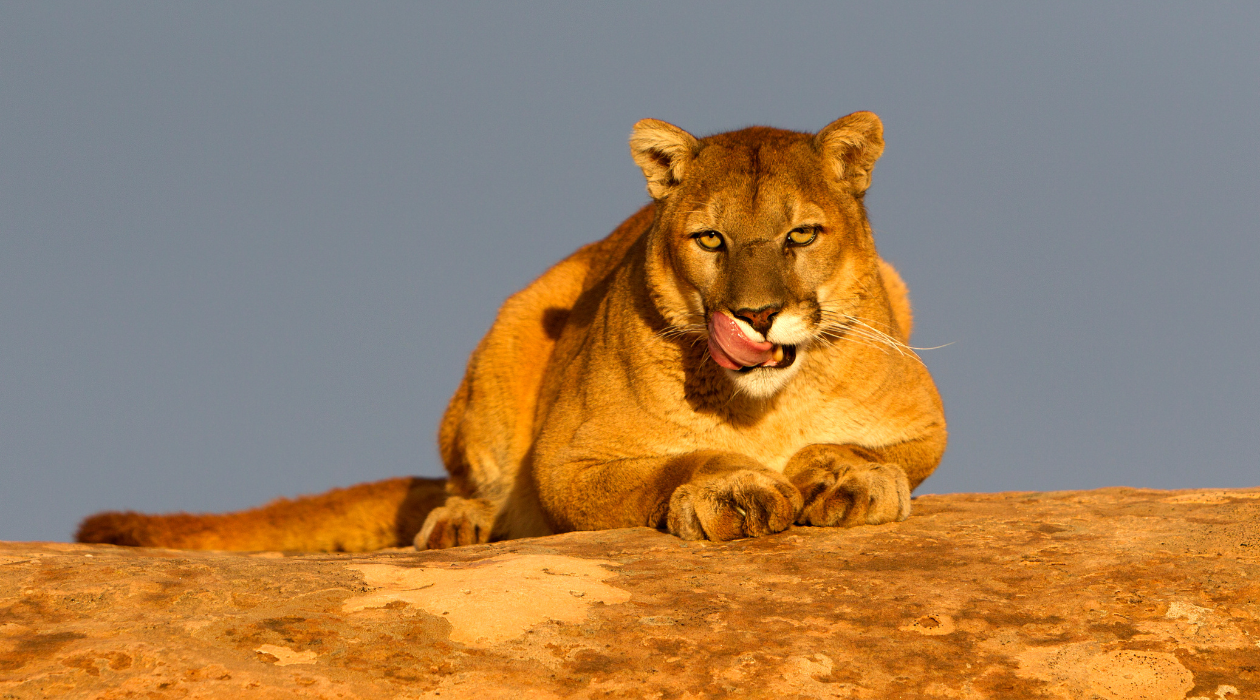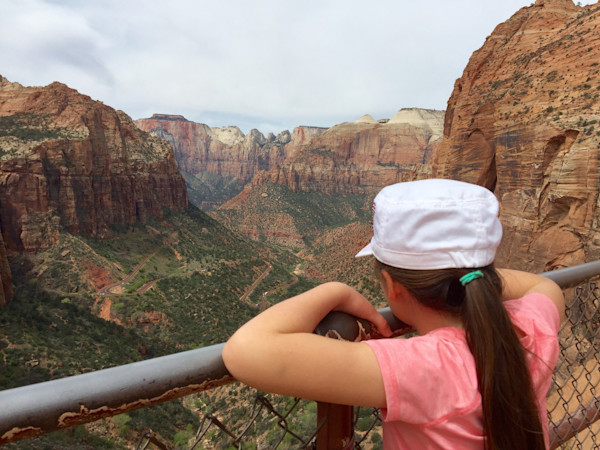
Utah Wildlife Just Wants to Have Fauna
Our state’s varied terrain lends itself to all kinds of interesting creatures.
Seeing animals in a zoo is interesting and all, but seeing them in the wild? Really cool. Why else would so many people pull over to the side of the road just to watch something eat? Much more fascinating than your cat. Thanks to the diverse ecology, we have an abundance of wildlife in Utah. And if you’re willing to stand back — waaay back — you can watch furry, winged and feathered creatures explore their natural habitat without fear of getting eaten yourself.
We’ve Got Game Animals
Utah is the home where the deer and the antelope play. There are close to 400,000 mule deer spread across the state, so it’s not unusual to spot one. During twilight hours, you’ll likely see a small group grazing in open meadows.
Antelope Island, along the shores of the Great Salt Lake, was named for its native population of pronghorn antelope. They are considered the fastest animal in North America, running up to 70 mph, but generally they stand still enough for you to get a good picture.
Bison (not buffalo) make their home on Antelope Island, too. Visit the park during the annual Bison Roundup, usually the end of October, when they are herded into corrals for sorting and vaccinating. Hundreds of free-roaming bison also make their home in the Henry Mountains, near Lake Powell. Hoping to increase the population, wildlife managers have sent some of that genetically pure herd to the Book Cliffs in eastern Utah.
Elk, one of the largest species of deer, are a bit more elusive. They generally stay in the higher elevations (6,000 to 10,000 feet), especially during the hot summer months. You may come across one while hiking through aspen forests, where most of the estimated 80,000 of them live.
There are about 3,000 moose in Utah, mostly in the northern mountains. They typically stay in forested areas, but have been known to wander in neighborhoods. Despite looking docile, they can be quite aggressive, so if you do see one, don’t try to make friends.
To see bighorn sheep, head to southeast Utah. Small herds of desert bighorns can sometimes be seen on the sides of rocky cliffs, particularly near Moab and Green River. The best time to see them may be in December, during their mating season. They tend to ignore people (guess they have other things on their minds), so you can get a bit closer in your vehicle.
The American black bear is the only bear species in Utah, but they are the largest predator (after multilevel marketers, that is). Most live in the Uinta and Boulder Mountains, but they are commonly seen across the state. They often wander into campgrounds, so if you’re saving the marshmallows for later, keep them — and all food — out of reach and in sealed containers. In fact, if you’re hiking in areas prone to bears, you might want to pack some bear spray.
Reigning Cats and Dogs
Utah has ideal hunting grounds for wild felines and canines, with plenty of places to roam and food to track.
Cougars
There are roughly 1,600 cougars — also called mountain lions — living in the foothills and canyons of Utah, most often among pinyon juniper and pine oak brush. They are nocturnal, but hikers do see them on trails during the day once in a while. During the winter months, one may make its way into a higher elevation neighborhood in its pursuit of a hungry deer. But just because it's in your backyard doesn’t mean you can pet it.
Bobcats
Bobcats are medium-sized cats — bigger than your Fluffy but smaller than James Corden — notable for their bobbed tails. They are common in Utah, and may be seen in a variety of habitats. Keep an eye out if you are near riverbanks and thickets, their prime hunting grounds in the hours around dawn and dusk. They tend to avoid humans, and won’t attack if they do see you, providing you don’t corner them to ask their opinion of “Cats.”
Lynx
The lynx, a cousin to bobcats, is found almost exclusively in coniferous forested areas. Although sightings in Utah are basically nonexistent, a lynx hair was found in the Manti-La Sal National Forest back in 2002, which caused quite a stir among experts. In other words, if you do see one, report it to the Utah Division of Wildlife Resources. You’ll know it by its long legs and oversized feet — handy for trekking through deep snow, and batting snowballs.
Coyotes
Coyotes are among the most common Utah wildlife, living comfortably in most habitats — including suburban neighborhoods. They are smallish canines, with a bushy tail and slender muzzle. While you may not see one, you may hear their yipping and short howls while they are hunting at night. Much like a gaggle of junior high kids.
Wolves
The DWR has confirmed around 20 wolves in northeastern Utah. There are no established packs, however, and sightings are rare — and usually just when they are passing through to surrounding states.
Foxes
Foxes, on the other hand, are happy to stick around. Most live in central and southern Utah’s shrubland and can be seen any time of day. They are smaller than coyotes, but have smaller snouts and long, bushy tails.
Feathers In Our Nest
Utah’s state bird is the California gull because their bulimic forefathers ate a bunch of crickets once. Long story. But there are plenty of other impressive avians, too, and not just because they have good table manners. For example, the wild turkeys that are happy to steal food from unsuspecting picnickers in Zion National Park. Fun to see, but not really five-star behavior.
Migratory Birds
Millions of migratory birds pass through Utah each year, many taking a pit stop at one of the nature preserves here. That includes more than 200 species, give or take. Then there are some that never leave.
Ouray National Wildlife Refuge: tern, ibis, avocet, killdeer
Bear River Migratory Bird Refuge: swan, grebe, loon, pelican, mockingbird
Fish Springs National Wildlife Range: egret, owl, swan, eagle
Miller Bird Refuge: hummingbirds, kinglets, woodpeckers
Raptors
Salt Lake City snowbirds head south when it turns cold, but a slew of bald eagles like northern Utah winters just fine. As many as 100 of America’s national birds have been spotted at the Farmington Bay Waterfowl Management Area in recent years. Willard Bay State Park is also a popular nesting ground for eagles. At Red Fleet State Park, near the Uinta Mountains in Vernal, you may see hawks, golden eagles, osprey, vultures and owls.
In the late 90s, the nearly extinct California condor was reintroduced into the wild in southwestern Utah. Today, you may spot one of their grandchildren around or near Zion National Park.
Endangered or Threatened
BLM land in Utah is home to other endangered or threatened birds. The Gunnison sage-grouse is listed on the Endangered Species Act as threatened, while the greater sage-grouse is considered a BLM sensitive species. The small southwestern willow flycatcher has lost much of its habitat, and now only a few hundred breeding pairs are in the wild.
Snake and Bake
Plentiful sagebrush, sand dunes, rocky hillsides and hot summer temperatures make Utah’s mountains the ideal habitat for snakes. There are plenty of the garden variety, but there are also eight venomous ones, all of them rattlesnakes. The most commonly seen is the Western rattlesnake. You’ll know one by its distinctive rattle — and not the cheerful maraca kind.
Bait and Swish
Freshwater fishing is a popular American pastime, and Utah is no different. As tempting as it is to just throw in a line, be sure to pick up a Utah fishing license before heading out. Find out where the fish are biting here. Think you don’t like fish? There’s plenty to choose from.
- Bass — white, striped, largemouth
- Bluegill
- Burbot
- Trout — brook, brown, cutthroat, golden, lake, rainbow, tiger
- Catfish
- Crappie
- Pike
- Perch
- Salmon
- Whitefish
Catch Me If You Can
Many of the usual critters make their home here — skunks, badgers, raccoons, rodents — but we do have some that are exclusive to the southwest.
Desert Tortoise
The desert tortoise is a Utah native, literally making its digs in Washington County. They can tolerate ground temperatures up to 140 degrees Fahrenheit, because they can burrow under the sand and rocks to keep themselves comfortable. Actually, they’re quite similar to St. George residents who disappear into their homes from April to September. You may see the tortoise near hiking trails in the Red Hills Desert Reserve, hanging out at the bottom of dry washes or on the rocky slopes.
Prairie Dogs
The Utah prairie dog lives exclusively in the state’s southwestern quarter, mainly in Bryce Canyon National Park. You can readily see them in the spring and summer, literally popping up in meadows near the road. There were 95,000 of the little guys in the 1920s but were nearing extinction by the 70s. Conservationists reintroduced the species to Bryce in 1973, and now more than 600 live there. Twenty years later, some were transferred to the Awapa Plateau to establish another colony.
Ringtail Cat
Although named ringtail cat, the elusive creature is actually related to the raccoon. Experts believe there is a large population in Zion National Park and Bryce Canyon, but ringtails are rarely seen. They can be about 32 inches long — plus another 12 inches counting the fluffy, black and white ringed tail. They hunt in the cracks and crevices of the red rocks and, unfortunately, around littered campsites. (That’s a hint: Please pick up all your trash.)
Gila Monster
One of the most poisonous lizards in the world also happens to be the state reptile. The Gila monster lives in its natural habitat in the Red Cliffs Nature Reserve. Catching sight of one is unlikely, though, as they live in burrows or rock shelters 98% of the time and are naturally reclusive.
It’s a Jungle Out There
There are more than 600 species of wildlife in Utah, thanks to our diverse habitats. We have fliers, slitherers, skitterers, meanderers, bounders and swimmers. Take a hike, ride a bike, or slowly cruise by them in a boat or car to observe them in their natural habitat. But no matter how cute they are, resist the urge to take one home. They’re messier than a 2 year old and much smellier than Uncle Frank.
Categories:
You May Also Like
View AllZion: Where Your Kids Will Take Theirs
The Zion Mountain Ranch is one of the best places to stay near Zion National Park. Check out the cab...
Get Wowed by Western Wildlife on an Antelope Island Tour
It’s a buffalo! It��’s an antelope! It’s a … spider? There’s more to Antelope Island State Park than t...
Fly Fishing the Mighty Green River
The Green River is a perfect spot for fly fishing. With large trout, and plenty of them, you'll be s...

